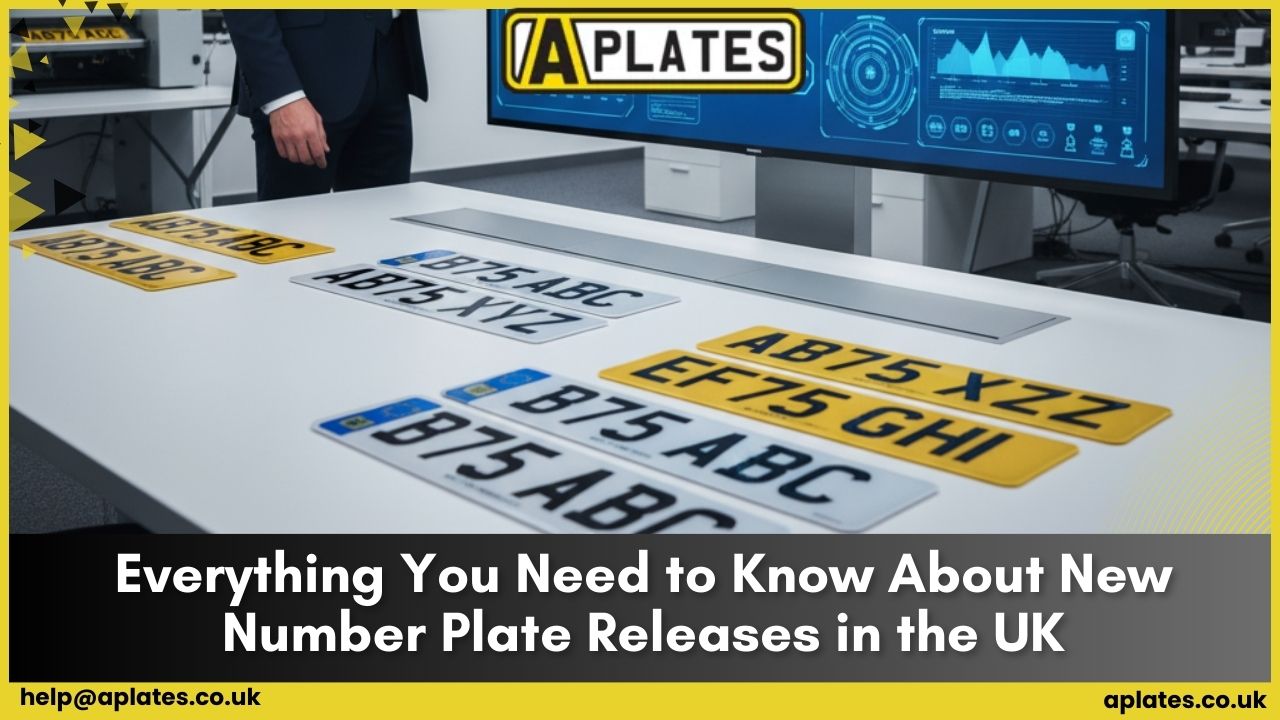
For car enthusiasts and those keeping an eye on the latest vehicle trends, the release of new number plates is a highly anticipated event. Twice a year, the DVLA introduces fresh registration numbers, allowing buyers to own vehicles with the newest identifiers. But when exactly do these new plates become available, and why does the system work the way it does? Let’s explore the timeline, significance, and impact of new plate releases in the UK.
Understanding the Number Plate Release Cycle
The UK follows a structured system for number plate registrations, ensuring consistency and clarity in identifying vehicle age. The new registrations are introduced in two phases each year—once in March and again in September. This dual-release strategy provides a clear distinction between vehicles registered in the first and second half of the year.
March Number Plate Release: How It Works
The first batch of new registration numbers becomes available on March 1st every year. This identifier directly reflects the year in which the vehicle is registered. For instance:
- A car registered in March 2024 will have the identifier ‘24’.
- A vehicle registered in March 2025 will carry the ‘25’ plate.
This system makes it easy to determine a car’s manufacturing year just by glancing at its number plate. If you’re looking to purchase a brand-new vehicle with the latest registration, March is the perfect time to do so.
September Number Plate Release: The 50+ Rule
The second number plate update of the year happens on September 1st. Unlike the March release, which directly reflects the year, the September registration follows a slightly different format by adding 50 to the March identifier. For example:
- A car registered in September 2024 will have the identifier ‘74’ (24 + 50).
- A vehicle registered in September 2025 will display ‘75’.
This means that a car purchased in September will always have a registration number with a higher value than one bought earlier in the same year.
Why Does the UK Have Two Number Plate Releases Per Year?
Before 1999, the UK followed a single-release system, where all new number plates were introduced on August 1st. However, this created an unbalanced demand for new cars, causing a massive surge in sales during one period of the year while leaving the rest of the year comparatively slow for dealerships.
To smooth out this seasonal rush, the DVLA introduced the twice-a-year system, helping manufacturers, dealerships, and buyers by evenly distributing new vehicle registrations. This approach ensures a steady flow of new cars in the market and gives buyers more flexibility in choosing their ideal vehicle.
How Does This Affect Vehicle Buyers?
Understanding the timing of new plate releases can influence your purchasing decision:
- Resale Value Consideration – Cars with the latest number plates tend to have a higher resale value. If you plan to sell your car in a few years, having a newer registration can be beneficial.
- Increased Demand in Release Months – March and September see a spike in new car purchases, so if you’re looking to get a brand-new vehicle, be prepared for increased competition and waiting times.
- Special Offers & Discounts – Dealerships often provide better deals on older stock just before new plates are introduced, meaning you could secure a discount on a nearly new vehicle if you buy just before a new plate launch.
Private Number Plates and Their Connection to Plate Releases
For those interested in personalized number plates, these release periods also present opportunities. Many people purchase new plates to match a specific style, initials, or lucky number, making March and September important times to look for new registration options.
At Aplates, we provide high-quality, legally compliant number plates, including custom designs and 4D plates. Whether you’re looking for a standard plate or a unique private registration, we help you find the perfect match.
Key Factors to Keep in Mind When Buying a New Plate
If you’re considering upgrading your number plate, here are some essential factors to consider:
- Legal Compliance – Always ensure that your plate meets DVLA regulations to avoid fines or penalties.
- Visibility & Readability – Choose plates with clear fonts and reflective backgrounds to ensure they are readable by ANPR (Automatic Number Plate Recognition) cameras.
- Durability & Quality – Opt for high-quality materials like acrylic plates that maintain their clarity and structure over time.
- Personalization Options – Consider customized plates to add a personal touch to your vehicle while still staying within legal limits.
The Impact of Number Plate Releases on the Automotive Market
The introduction of new number plates has a noticeable effect on both the new and used car markets. Here’s how:
- Boost in New Car Sales – Many buyers wait for the latest plates to become available before purchasing a new car, driving up sales during March and September.
- Depreciation of Older Models – Vehicles with an older registration number may see a slight drop in value when a new plate is introduced, making it a good time for bargain hunters to find a deal on previous models.
- Increased Demand for Private Plates – Some buyers look to private registrations to maintain a timeless appearance, avoiding the immediate impact of plate changes.
Final Thoughts: Should You Wait for the Next Number Plate Release?
If you’re eager to drive a car with the newest registration, March and September are the key months to watch. Whether you’re buying a new vehicle, investing in a private plate, or upgrading to a stylish 4D number plate, understanding the number plate release cycle helps you make an informed decision.
At Aplates, we offer a wide range of DVLA-compliant number plates, ensuring you get both style and legality in one package. Check out our collection today and be among the first to showcase the latest plate on your vehicle!